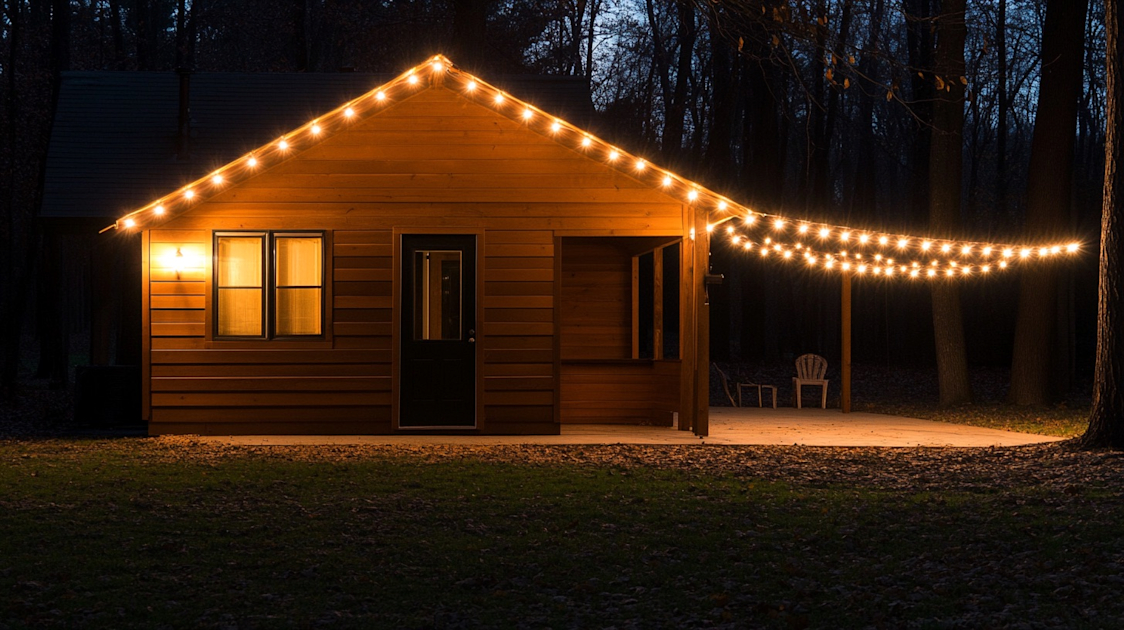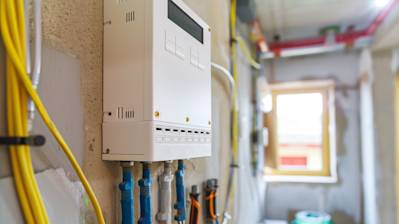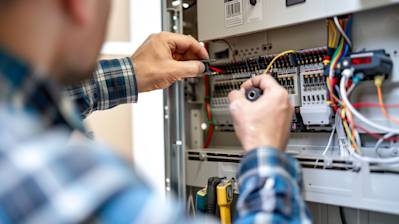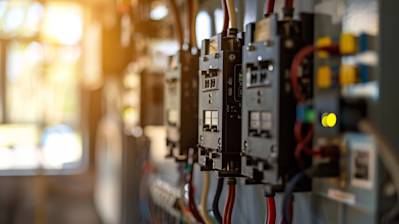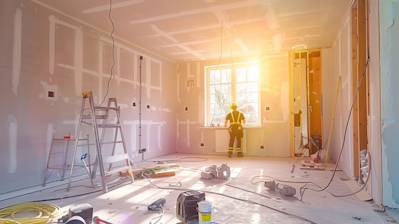Electricity can make your shed a more adaptable and useful space. Understanding how to run electricity to a shed can facilitate a variety of activities, such as creating a home office or setting up a workshop. This article sets down a detailed road map for introducing power to your shed, facilitating an informed DIY electrical installation.
Identifying the Requirements
First, define why you need electricity in your shed. Are you looking to power tools? Run a refrigerator? Heat the space for winter work? The answer will determine the type and number of circuits you need. Make sure your distribution board has sufficient capacity to handle the new load. Here are the steps involved:
- Identify your power needs.
- Check the capacity of your distribution board.
- Get the necessary permissions from authorities.
Ideally, consult an electrician or a building inspector to ensure the project falls within safety and building code parameters.
Collecting the Right Tools and Materials
It's essential to have the correct tools and materials before you start. Some commonly required items are:
- Wire strippers
- Trenching spade
- Armoured cable (length will vary)
- Cable clips
- Weatherproof boxes
- Outdoor circuit breaker
- Conduit
- Utility knife
- Screwdrivers
Remember, safety first! Always wear insulated gloves and safety goggles when working with electricity.
Running the Cable from Your House to the Shed
Running electricity to your shed may call for a certain level of excavation, especially if your shed is isolated from your home. This part of the process involves:
- Locate the shortest and most direct path from your house to the shed.
- Dig a trench along this route. It should be deep enough to bury the conduit to prevent accidental damage.
- Install the conduit and run the cable through it.
- Connect the conduit to your shed and home, fitting weatherproof boxes at both ends.
Remember: Running power to your shed is a significant task, involving physical labour and the need for accurate and safe electrical connections.
Wiring the Shed
The wiring inside your shed will depend on your specific needs (lighting, outlets etc.). Here's a step-by-step guide:
- Plan where your outlets will be and how the wiring will run.
- Secure the cables along the walls, ensuring they're safely away from potential hazards.
- Connect your cables to your outlets, switches and lights.
- Frame your interior wall to protect and hide your cables.
Connecting to the Main Supply
Most importantly, connection to your domestic main supply must be done safely and should ideally be carried out by a qualified electrician. The steps are:
- Install a separate circuit breaker for your shed in the distribution board.
- Connect the cable running from the shed to this circuit breaker.
- Once connected and safely tucked away, restore the power supply.
Be highly meticulous during this process and never attempt it if you're unsure of what needs to be done. When dealing with the main supply, safety is paramount.
Testing and Troubleshooting
Conduct a thorough check before commencing regular use. Test all outlets, fixtures, and switches to ensure they're operating correctly. If you notice any issues, disconnect from the main supply, and revisit your wiring to identify and rectify the problem.
Frequently Asked Questions about How To Run Electricity To A Shed
What are the permits required to run electricity to a shed?
Permits vary by city, county, and country. It's crucial to check and consult with your local building authority or housing department before you start work on running electricity to your shed. Not getting the right permits can result in costly fines or even require you to undo the work you've done.
What kinds of wires are ideal for running electricity to a shed?
When running electricity to your shed, it's best to use a proper outdoor cable. Most commonly, UF-B (Underground Feeder) cables are used. These wires are ideal as they are waterproof and suited for running in-ground. All wires should be run in PVC conduit for protection.
How to run an underground cable from your house to the shed?
Start off by digging a trench between your house and your shed. The trench should ideally be about 18 inches deep, as per standard electrical codes. Next, lay a conduit in the trench and run the UF-B cable through it. Be sure to leave extra cable on both ends for connections. After all the connections are made, cover up the trench.
How to secure the wiring inside the shed?
Once the outer wiring is done, you can move to the inside of your shed. You can use staplers to secure the wiring to the studs. Make sure to not pierce the protective covering of the wire. The wires should be run neatly along the wall/ceiling and shouldn’t drape or sag.
How to connect your shed's electrical system to the main power supply?
To connect your shed's electrical system to your home's main power supply, you will ideally need to hire a certified electrician. They will install a new circuit on your main electrical panel and connect it to your shed through the installed underground cable. Keep in mind this step is extremely important and potentially dangerous if not done correctly, so it's best to leave it to professionals.
How much does it cost to run electricity to a shed?
The cost greatly depends on the distance between your house and your shed, the type of wiring, whether you hire an electrician or DIY, permit costs, and more. As a ballpark figure, it can range from $200 to $2000 and upwards.
What safety considerations should I keep in mind when running electricity to a shed?
Safety is paramount when dealing with electricity. Always use protective gear when needed and adhere to the electrical code stipulations. For example, run wires through conduits, ensure to keep outlets away from water sources, and make sure your project is properly inspected. Never overload circuits and ensure your shed is properly grounded.
Pros of Running Electricity to a Shed
Enabling More Utility
Without electricity, a shed is only useful during daylight hours and only for activities that do not require electricity. By running electricity to your shed, you are greatly increasing its usefulness. You can use power tools, air conditioning units, heaters, and lighting equipment, to name just a few.
Facilitating Workshops
If you plan to use your shed as a workshop for woodwork, crafting, or any DIY projects, electricity is essentially a must-have. Power tools like saws, drills, or grinders often require electricity.
Creating Hobby Spaces
Perhaps you’re a musician, painter or writer and need a quiet, personal space away from the hustle and bustle of the house. Having electricity would allow you to install necessary equipment like sound systems, easel lights, or computers.
Enhancing Comfort
Adding electricity to your shed can also enhance comfort. Being able to operate fans, heaters, air conditioners or even small kitchen appliances like tea kettles, means you can spend a lot of time in your shed, irrespective of the weather.
Increasing Property Value
From a financial perspective, electrifying your shed can increase your property’s value. Potential buyers often look for extra features that could enhance their living experience or provide added utility. A shed with electricity definitely ticks this box.
Cons of Running Electricity to a Shed
Obstacles in Installation Process
Running electricity to a shed is not always straightforward. There might be several challenges, depending on where your shed is located.
Distance from the Main Property
Electricity will have to be supplied from the main property. If the shed is located far from the house, this could involve significant trenching and laying of wires, which can be both time-consuming and expensive.
Legal and Safety Regulations
Depending on local laws and regulations, you may require permits to run electricity to your shed. Additionally, if the work is not done correctly, it can result in safety issues. It’s advisable to hire a professional electrician for the task.
Cost of the Project
The cost of installing electrical power to a shed can vary widely depending on the specific requirements, distance from main property, and area regulations. This can make it a prohibitive project for some homeowners.
Ongoing Energy Costs
Once the shed has power, there will be ongoing electricity costs. Depending on the intended use of the shed, these costs could be insignificant or quite substantial.
Potential Security Risks
Adding electricity can make your shed a more appealing target for thieves. For example, you might start storing more expensive tools or appliances in your shed.
The Need for Additional Security Measures
You might need to take additional security measures like installing locks or a security system to keep everything secure, which can add to the overall cost of electrically outfitting a shed.
In the end, whether or not to run electricity to your shed is a decision that should be made based on the specific needs, budget, and circumstances. It's important to consider both the advantages and potential disadvantages carefully.
Summary
So here's the bottom line; knowing how to run electricity to a shed can bring significant improvements to your workspace. You no longer have to trip over extension cords or strain your eyes in dim lighting conditions. The interesting part is that it doesn't require too much technical know-how. By following a few safety rules, you can effectively hook up your shed to a power source, making it easier to use electrical tools or even work at night.
Let's recap, running electricity to a shed adds significant benefits. It may seem daunting at first but remember, it's not rocket science. With the help of a professional electrician or some standard tools and guidelines, you easily can turn your dark, unpowered shed into an electrified workspace. Trust me, once you've got the knack of this, you might be considering taking up more DIY electrical projects around your home.
Take it from me, running electricity to a shed is pretty much a game-changer. It gives you a workable space all year round, regardless of the light conditions. Plus, the convenience of not having to unplug and carry heavy electrical appliances back and forth. Safety is key in the whole process, so unless you have a good understanding of the electrical workings, don't shy away from hiring a professional. After all, your safety and the efficiency of your shed are worth it!
About Sagan Electric
Sagan Electric is your go-to electrical service provider in Sacramento, CA. For years, we’ve played a crucial role in everything electric in the heart of California. Our reputation rides on the quality of our work. We are all about bringing power to the people with proficient, punctual, and pretty darn friendly service. Whether it's repairing a light fixture, switching your house to an eco-friendly system, or taking on large-scale commercial projects - we've got your electrical needs covered.
Tags: electricity, shed, wiring,

